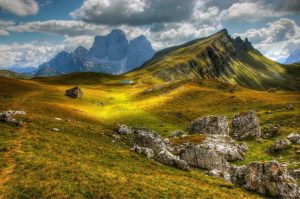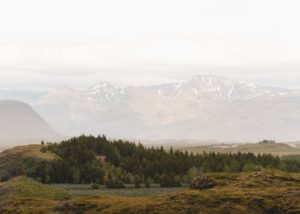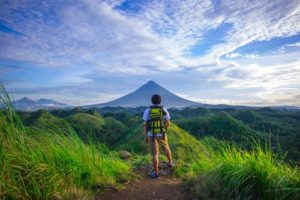The novel coronavirus disease (COVID-19) pandemic has affected us all economically, physically, mentally and emotionally ever since the very first lockdown in March, 2020.
Tourism is a significant part of the Indian economy. According to the World Travel and Tourism Council (WTTC), the tourism industry in India contributed Rs 194 billion to India’s Gross Domestic Product (GDP) in 2019.
The industry also supported 87.5 million jobs, contributing to 12.75 per cent of total employment in 2018-19. Unfortunately, it has been one of the worst-hit sectors as people have confined themselves to the safety of their homes and might continue to do so, unless a vaccine is available in the market.
Countries across the globe have introduced strict travel and tourism restrictions to combat the pandemic’s spread. The WTTC is estimating losses of up to $2.7 trillion around the world in 2020, with up to 100 million jobs at risk.
In the past few years, the Union Ministry of Tourism had undertaken a few initiatives to develop a strong visitor economy, such as the Incredible India 2.0 campaign, PRASHAD and Swadesh Darshan.
In 2019, foreign tourist arrivals in India stood at 10.89 million, achieving a yearly growth rate of 3.20 per cent from 2018, earning $29.90 billion in foreign exchange earnings. But the top countries that once contributed to foreign tourists in India, namely China, Germany, the United States and the UK have badly hit by the pandemic.
The aviation sector, which once contributed 2.4 per cent to Indian GDP, is also struggling to survive. The Indian aviation industry could see losses of up to $3.6 billion during April and June 2020, according to the Centre of Aviation.
The travel ban has hugely impacted tour operators and travel agencies, affecting not only present but future bookings as well. The International Air Transport Association estimates over 2.9 million jobs at risk in the Indian aviation and its dependent sectors.
The hotel, aviation and travel sector may incur losses of about Rs 8,500 crore due to travel restrictions imposed on foreign tourists according to the Indian Association of Tour Operators. This would further deteriorate the condition of small to medium-sized enterprises.
Government agencies and ministries have recommended various measures for the survival and revival of the travel and tourism sector. These include extended moratorium, waiver of statutory dues, stimulus packages, reduction in goods and service tax, direct cash support, low interest loans and funding forces among others.
But these are just short-term avoidance for major economic losses. Indian tourism has, for a long time, just focused on creating more and more tourist destinations in the name of economic upliftment of local communities, rather than striking a balance between the needs of host, visitor and the environment.
It is time to turn the pandemic into an opportunity by looking at tourism in a different light and redesigning the current business model into a long-term sustainable and resilient industry. The degree of pandemic stress may vary among countries but the experience has been nearly similar for all of humanity.
Himalayan tourism
The rural Indian Himalayan Region (IHR) has rather been hit hard because of its limited and seasonal livelihood options, mainly comprising of agriculture and tourism. The towering peaks, majestic landscape, rich biodiversity and cultural heritage of IHR has for years drawn visitors from the Indian subcontinent and across the world, making tourism the key driver of socio-economic development of the region.
Apart from pilgrimage tourism, which has been an important feature of the Himalayas, other forms of tourism like adventure, trekking, mountain climbing, camping, recreation, aesthetics, eco-tourism and agri-tourism have been gaining popularity.
Over-tourism, surpassing the carrying capacity of a destination, has always been the key issue of tourism in IHR. Every summer, the mass inflow of tourists towards the hill stations has often led to specific negative externalities such as inappropriate and dangerous construction, poorly designed roads, inadequate waste management, air and water pollution, loss of natural resources and biodiversity, vehicular traffic and an increasing carbon footprint, among others.
These are cumulatively affecting the long-term tourism development prospects of IHR. COVID-19 has now provided a rare opportunity for the earth to heal, which has rejuvenated the mountain ecosystem after a very long time.
It provides a great scope for the remodeling of tourism sector as ‘Green Tourism’, so as to make it inclusive and sustainable, thus contributing to the United Nations-mandated Sustainable Development Goals (particularly SDG-8 and SDG-12). As sustainable cities and communities (SDG-11) gain attention and investment in India, efforts to strengthen, protect and safeguard our natural and cultural heritage is becoming inevitable.
The current model of tourism in the IHR is viewed as a source of environmental degradation. The impacts of mass tourism and disregard for the carrying capacity of the mountains has led to serious concerns among policy-makers, local communities (hosts) and visitors (tourists).
While there is a great potential to harness the tourism assets of the region, there is an increasing realisation that the tourism development pathway post-pandemic needs to be different and build on the principles of sustainable development.
The tourism recommendations need to be articulated in alignment with the four pillars namely, environmental sustainability, social inclusiveness, economic prosperity and cultural safety.
It is important to design and implement eco-labelling tourism standards so that the transformation happening in the IHR landscape – climate change, youth outmigration, drying of springs, forest fires, degradation of natural and cultural resource, can be assessed and minimised.
Monitoring and evaluation on a regular basis will ensure that the good practices are incentivised and bad ones are penalised. Thus, for the green economy to surface, a performance-oriented incentive mechanism can be beneficial.
The existing institutional and governance pattern in the IHR needs to be updated and oriented towards the green economy. The fiscal commitment and social responsibility of the IHR states, could help in the maintenance of certification standards and inclusive development norms for the community’s benefit in the long run.
A step towards green tourism can be taken through establishing:
- Sustainable tourism fund
- Sustainable development task force
- Sustainable tourism label and certification system
- Awareness campaign and promotion
- Social inclusiveness and co-governance.
Tourist destinations in the IHR are reporting disturbing trends of drug abuse (psychedelics), exploitation of labour and uncontrollable land sales, despite states having put stringent norms in place for outsiders.
The COVID crisis has given a chance to reflect on the current tourism policies and plans, and rethink tourism against the backdrop of socio-economic assessment of the mountain community and associated environmental threats for a sustainable future.
Looking ahead for the revival of economy, the measures adopted today will shape the tourism sector of tomorrow. Our country is marketing the rich natural and cultural potential of the Himalayas at a very low price.
The success of green tourism can be understood with examples like the Blue Yonder (India), the Living Tisza Trademark (Hungary), Transhumance (Poland), Hostetín – model village (Czech Republic), National Eco-Tourism Strategy (Botswana, National Tourist Council (Bulgaria), etc.
Local prosperity and community well-being, along with visitors’ fulfilment have to be balanced with environmental integrity, so that the revenue earned from tourism is ploughed back in the sustainable development of the region.
When tourism development focuses on the actual needs of the local community — preserving their traditional knowledge and practices and providing them the basic necessities of life — it automatically creates a sustainable system worth visiting and conserving at the same time.





